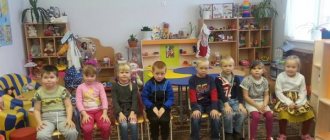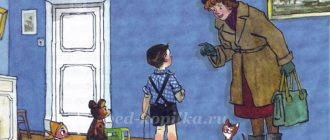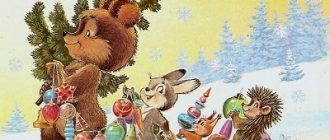reference Information
Documents • Laws • Notices • Document approvals • Contracts • Requests for proposals • Technical specifications • Development plans • Document management • Analytics • Events • Competitions • Results • City administrations • Orders • Contracts • Work execution • Protocols for consideration of applications • Auctions • Projects • Protocols • Budgetary organizations Municipalities • Districts • Education • Programs Reports
: • by references • Documentary base • Securities
Regulations
: • Financial documents
Resolutions
: • Categories by topic • Finance • cities of the Russian Federation • regions • by exact dates Regulations
Terms
: • Scientific terminology • Financial • Economic
Time
: • Dates • 2015 • 2016 Documents in the financial sector • in the investment sector • Financial documents - programs
Migratory birds in spring: logic puzzles for children
Logical problem 3. Each has its own time. Birds in spring
Each bird flies to us at its “own time”. This is how it is written about it in N. Sladkov’s story:
N. Sladkov. Birds brought spring
“The rooks arrived and brought thawed patches. Icebreaker wagtails broke the ice on the river. The finches appeared and the green grass began to fluff.
Further more. The chiffchaffs have arrived and the flowers are colorful. The cuckoo has returned - the leaves on the birch trees have hatched. The nightingales appeared - the bird cherry blossomed.
That’s how spring is done: a little of each.”
Why does each bird have its own time of arrival?
Try to guess it yourself with your children.
“The Crake and the Rook” (E. Shim) will help you guess what the reason is.
“- Crake, why are you late, did you arrive from warm lands so late?
- And I waited until my house grew up.
- How is it that the house will grow?!
- You live in a tree, Rook, you don’t understand. And I live in a clean meadow, hiding in the grass. So I waited for the grass to grow!”
Another hint is that the birds that were the last to fly away in the fall are the first to return to us. And vice versa, the last to return to us almost in the summer are those birds that were the first to fly away from us at the beginning of autumn. Why? Let's remember together with the children why the birds flew away from us in the fall and did not spend the winter with us? They would freeze, they would have no food. So which birds arrive first? Those who can get food for themselves even in March.
Why do swallows arrive only in May? Let's remember how swallows fly close to the ground before the rain - why do they do this? Because they catch insects (in the summer in the village, show this phenomenon to the children). Swallows feed on insects. And when do insects appear in our forests, fields, and gardens? In May. So the swallows come to us when there is food for them.
Logical problem 4. Birds are auditors
Author – N. F. Vinogradova
“Tractor drivers call these birds “resistors.” As soon as the tractors go out into the spring arable land, these black proud birds are right there - decorously and importantly walking behind the tractor along the freshly plowed strip, picking worms from the ground. What kind of birds are these?”
Why are rooks called “auditors”? Who is an “auditor”? Are rooks migratory or wintering birds? Why do people call rooks “the harbingers of spring”?
Logical problem 5. Why do rooks have a white beak?
Rooks are among the first to arrive to us, proudly walk through the fields, looking for worms, larvae, and beetles in thawed areas.
What color is the rook's beak? White. And some rooks have a beak... black!!! Why do you think? This riddle has a very interesting solution. And the old rook White Beak and the young rook Black Beak will tell you and your children (E. Shim “Black Beak and White Beak”).
It is best to act out this story using figurines of two rooks, painted differently.
“- Rook, you were probably flying to the fire?
- Why is it for a fire?
- Yes, your nose is sooty!
- Why is it sooty?
- Rooks have white noses, but yours is black! It's like they smoked it on purpose!
- And you’re still lying! My nose is normal! And very beautiful! It’s just that I’m still a young rook, I haven’t been in the field much, I haven’t poked around in the ground much... So I didn’t have time to polish my beak until it shines!”
After reading this short story - dialogue, ask your child how to understand - did we meet an old rook in the village in the spring or a young one? Why was the beak of a young rook called “smoky”? (Explain to the child what happens in a fire, what “smoky” means. Remember the soot that children could see at the dacha, the coals from the fire, tell the child that after a fire only black coals remain. And the young rook’s beak is also black. That’s why They called its beak “smoky”).
Entertaining task 6. The secret of the nightingale
In spring nightingales sing. And when do they eat? You won't be full of songs. It turns out that the nightingales have their own secret. Here's what:
“A nightingale sang in the bird cherry trees. He sang without a break, loudly and bitingly. His tongue in his wide-open beak beat like a bell. When only he has time to eat and drink! After all, you won’t be satisfied with just one song. He hung his wings, threw back his head, his sharp beak snapped like scissors in the hands of a deft hairdresser. It clicks and clicks with such sonorous trills that even the neighboring leaves tremble, and warm steam escapes from the heated neck.
...And mosquitoes flock to the park! They can’t sharpen their nose under a tight feather, so they sound over their gaping beak. They just ask to be put in your mouth, they stick right to your tongue! The nightingale clicks songs and... mosquitoes. Two things at once. And one is not a hindrance to the other. And they also say that songs don’t feed the nightingale!”
(N. Sladkov. Nightingale)
For the curious: interesting facts about nightingales in spring
In the first half of May, nightingales return to us. First, the male nightingales fly to us and immediately begin to sing, but they sing still weakly and uncertainly. Their singing is a signal for the female nightingales. When the females arrive, the nightingale songs begin. This bird's voice is amazingly beautiful!
But not every nightingale will learn to sing beautifully. Nightingales take three years to learn to sing! Only in the third year do they become magnificent singers. Young nightingales learn to sing from their neighbors - old nightingales. If the neighbors do not sing very well, then the nightingale does not find its full, beautiful voice. As they say, whoever you get along with, that’s how you’ll gain. This proverb literally refers to the “musical school of nightingale singing,” in which experienced nightingales teach young nightingales to sing.
Nightingale Day is usually celebrated on May 15 - this is the time of sunny, warm spring and nightingale songs. People used to say this: “Nightingales fly when they can drink dew or rainwater from a birch leaf.”
In May - June, nightingales begin to build nests. The nest is made of grass, wool, and dry leaves. The female incubates the eggs for two weeks.
Chicks are born in June. At this time, the nightingale concerts end - the nightingales raise their chicks.
Many have heard the nightingale, but not everyone has seen it. He is invisible. It is very difficult to see the small gray bird.
E. Shim. The nightingale and the little crow
“- Carr! Where are you going, gray, small and squeaky little one? Go away!
- Why?
- The Nightingale lives in these bushes - a golden sock, a silver neck. Are you your equal?
-Have you seen him?
- It hasn’t happened yet. But they say - so good, so handsome! Just to take a peek...
- So look. I am Nightingale!
Education and science
Science
: Tests • Scientific and technological progress • Pedagogy • Work programs • Faculties • Methodological recommendations • School • Vocational education • Student motivation
Subjects
: Biology • Geography • Geology • History • Literature • Literary genres • Literary characters • Mathematics • Medicine • Music • Law • Housing Law • Land Law • Criminal Law • Codes • Psychology (Logic) • Russian Language • Sociology • Physics • Philology • Philosophy • Chemistry • Jurisprudence
Spring changes
Spring is a time of year similar to early morning. Nature awakens from winter sleep. The sun's rays begin to warm the frozen ground. Everything around comes to life, filling the air with cheerful sounds.
The last frosts are still making themselves felt, but we can already note the three first signs of the coming spring:
| Sign | Description |
| Snow melting | The days are getting a little warmer and the snow lying on the roadsides is beginning to settle. Its top layer hardens, forming dense ice. Melted snow takes on a grayish tint and gradually turns into streams. |
| The sound of drops | At the same time as the snowdrifts, the icicles begin to thaw. Droplets of water falling from the roofs ring, breaking on the asphalt and forming numerous puddles. |
| Weather variability | In early spring the weather changes frequently. Winter is in no hurry to retreat; you can often see snow or rain outside the window. Frosts are possible. However, the sun appears more and more often, and the cold is replaced by warmer days. Gradually there are more and more of them. |
Business and finance
Business
: • Banks • Wealth and prosperity • Corruption • (Crime) • Marketing • Management • Investments • Securities: • Management • Open Joint Stock Companies • Projects • Documents • Securities - control • Securities - valuations • Bonds • Debts • Currency • Real estate • (Rent) • Professions • Work • Trade • Services • Finance • Insurance • Budget • Financial services • Loans • Companies • State enterprises • Economics • Macroeconomics • Microeconomics • Taxes • Audit Industry
:
• Metallurgy • Oil • Agriculture • Energy
Construction
• Architecture • Interior • Floors and ceilings • Construction process • Building materials • Thermal insulation • Exterior • Organization and production management
Photo blogs
Art
• Children's creativity • Paintings • Art • Congratulations • Film review • Musical world • Russian rock
World
• People of the world • The world around us • My homeland is the USSR • Nature Channel • Stones and minerals • Cooking, food • Construction and architecture • Under construction • Transport • Weapons • Military transport
beauty
• Fashion Pandia.ru • Girls and Girls
School
• Tests for the Unified State Exam • Solver books • Unified State Examination • 10th and 11th grades • Various textbooks • 4th grade • Russian language grades 5-9 • 5th grade • 6th grade • 7th grade • 8th grade
Wisdom
• Cliparts • Quotes
Author Directory (private accounts)
AutoAuto service • Auto parts • Products for auto • Auto repair centers • Auto accessories • auto parts for foreign cars • Body repair • Auto repair and maintenance • Car chassis repair • Auto chemicals • oils • technical centers • Gasoline engine repair • auto electrical repair • Automatic transmission repair • Tire fitting BusinessAutomation of business processes • Online stores • Construction • Telephone communications • Wholesale companies LeisureLeisure • Entertainment • Creativity • Catering • Restaurants • Bars • Cafes • Coffee shops • Night clubs • Literature TechnologiesAutomation of production processes • Internet • Internet providers • Communications • Information technologies • IT companies • WEB studios • Website promotion • Software sales • Switching equipment • IP telephony | InfrastructureCity • Authority • District administrations • Courts • Utilities • Teen clubs • Public organizations • City information sites The sciencePedagogy • Education • Schools • Training • Teachers GoodsTrading companies • Trade and service companies • Mobile phones • Accessories for mobile phones • Navigation equipment |
Introducing preschoolers to spring natural phenomena
| Plan | Page |
| Part name | |
| I. Introductory part | |
| Introduction | 3 |
| 1 Introducing preschool children to familiarize children with seasonal phenomena in nature | 4 |
| 1.1.The importance of introducing preschoolers to nature | 4 |
| 1.2. The role of the teacher in the formation of knowledge to familiarize children with seasonal phenomena in nature | 6 |
| 1.3. Basic methods of introducing preschoolers to nature | 8 |
| 1.4.Environmental education in the process of introducing children to nature | 18 |
| II. Main part | 21 |
| 2.1. Nature in spring | 21 |
| 2.2. Familiarization with spring phenomena for children of middle preschool age. | 22 |
| 2.3. Familiarization with spring nature for older preschoolers | 26 |
| Conclusion | 35 |
| List of used literature | 37 |
| Application | 46 |
Introduction
The global problems of our time require an immediate rethinking of the historically established attitude in human consciousness aimed at a consumer attitude towards nature, a change not only in its behavior, but also a change in value orientations. That is why one of the most pressing issues of modern society is the problem of forming an ecological culture of the individual.
Currently, the formation of an ecological culture in preschool children is becoming a priority in pedagogical theory and practice.
This is due to the difficult environmental situation on our planet: the rapid growth of the population, and, consequently, the problem of providing it with food, industry with mineral raw materials, the problem of energy and, of course, pollution of the natural environment - all this poses a threat to the existence of life itself on Earth. Only at the end of the twentieth century. humanity has realized the harmfulness of its “thoughtless” management on Earth. One of the most important reasons for this state of affairs is the environmental illiteracy of the population, the inability to foresee the consequences of their intervention in nature [1, 6].
Environmental education is an integral part of the moral education of the individual. The task of moral education is not simply to achieve knowledge of moral norms, but, most importantly, to form beliefs, motives and actions. Protecting life on Earth from environmental disaster is becoming the most important problem of our time, and awareness of this problem should be paid attention to from early childhood.
Environmental education is an integral part of the moral education of the individual. The task of moral education is not simply to achieve knowledge of moral norms, but, most importantly, to form beliefs, motives and actions. Protecting life on Earth from environmental disaster is becoming the most important problem of our time, and awareness of this problem should be paid attention to from early childhood.
Environmental education of preschool children is not just a tribute to a “fashionable” trend in pedagogy. This is the education in children of the ability to understand and love the world around them and treat it with care. By introducing children to nature, opportunities open up for aesthetic, patriotic, and moral education. Communication with nature enriches a person’s spiritual sphere and contributes to the formation of positive moral qualities [3, 16].
Purpose of the study: to study the process of formation of knowledge about the seasons in older preschoolers, to form in children the necessary ideas about the seasons and to identify the effectiveness of using the developmental set of activities we have developed.
- FAMILIARIZING PRE-SCHOOL CHILDREN ABOUT SEASONAL PHENOMENA IN NATURE
- The importance of introducing preschoolers to nature
The influence of native nature is the source of the first concrete knowledge and those joyful experiences that are often remembered for a lifetime.
Children always and everywhere come into contact with nature in one form or another. The color, shape and smell of flowers and fruits, the singing of birds, the rustle of grass and much more allow children to feel nature and can serve as rich material for the development of children's aesthetic sense and sensory education. They are attracted to green meadows, bright flowers, birds, streams, etc.
Children's lack of knowledge about nature often leads to the formation of various prejudices and superstitions. Misconceptions often cause children to have an unfriendly attitude towards animals, causing them to destroy hedgehogs, beneficial insects, etc. This not only harms nature, but also has a negative effect on the psyche of children and makes them bitter. It is much more difficult to correct existing misconceptions than to form new, correct ones. That is why it is very important that children already in preschool age receive important information about nature.
In order for children to correctly display natural phenomena, it is necessary to guide the process of their perception of nature. Without bringing children closer to nature and its widespread use in the educational work of kindergartens, it is impossible to solve the problems of the comprehensive development of preschool children - mental, aesthetic, moral and physical [2, 27].
The great teacher K.D. Ushinsky attached great importance to the conscious acquisition of knowledge and believed that learning gives children complete knowledge only when it is clear, systematic and consistent. Proving the need for visual learning, he developed the theory of visualization. He emphasized that observations of natural phenomena and their generalizations should be the main sources of knowledge. He said that nature is the natural environment in which man develops his activities, using it for his own purposes. Man comprehends the laws of nature and makes it serve him. “The natural sciences,” he wrote, in their entirety represent this eternal struggle of the human mind with the secrecy of nature.” “Until,” K.D. Ushinsky pointed out, “as long as we do not know our Motherland and until this knowledge spreads among the masses of the people, we will not be able to take advantage of the means that nature and the population of our country present to us, and we will be poor because we are ignorant” [8, 18].
He further noted that the teacher is obliged to teach children to first observe, then draw conclusions. He believed that direct observations in nature are of great educational importance for the development of children, and that it is difficult for a teacher’s word to compete with them.
Visibility was understood by K.D. Ushinsky not only as a direct acquaintance of children with nature, but also as the use in lessons of paintings, maps, globes, collections and other aids that help children create a certain image of an object and phenomenon in their minds. He believed that it was the direct observation of the surrounding nature that “will constitute those initial logical exercises of thought on which logic depends, i.e. the truth of the word itself, and from which logical speech and understanding of grammatical laws will then flow naturally.” Further in this work he talks about and logic itself is nothing more than a reflection in our mind of the connection between objects and natural phenomena” [4, 51].
The ability to observe, developed in the process of learning about nature, gives rise to the habit of drawing conclusions, fosters the logic of thought, clarity and beauty of speech - the development of thinking and speech occurs as a single process.
Many teachers drew the teacher's attention to the need to open the book of nature to the child as early as possible, so that it brings something new every day. In the book by V.A. Sukhomlinsky “I give my heart to children” about [1, 20].
The diversity, brightness, beauty of nature, the clarity of its connections and dependence ensure the accessibility of their understanding by children and have a significant impact on the improvement of their mental activity, which is manifested in the development of logic and independence of thinking. The child learns to find and correctly define in words causal and temporal dependence, sequence, interconnection of objects and natural phenomena, i.e. learns to simply explain what is observed. Children’s ability to compare, compare, and draw conclusions is improved. The child learns to reason, tell, describe.
Nature provides opportunities for a variety of activities for children, which contributes to the active assimilation and use of acquired knowledge. The process of cognition of nature in all its diversity contributes to the understanding and use in coherent speech of various grammatical categories that denote names, actions, qualities and help to analyze objects and phenomena from all sides.
From all that has been said, we can conclude that in the pedagogical process of a preschool institution, special attention should be paid to familiarization with nature in order to develop the thinking and speech of children.
The main task in mental education is to educate children in knowledge about inanimate and living nature, accessible to the sensory perception of children, connections between objects and natural phenomena. It is necessary to show children nature as it really is, influencing their senses.
1.2. The role of the teacher in the formation of knowledge to familiarize children with seasonal phenomena in nature
Parents are the first to open a window into nature for a child. From the first steps, a person comprehends the world, learns to understand time, and masters space. Nature entertains, pleases, and sometimes frightens a child. Children come into contact with nature on their own. They are attracted by everything and everyone: green meadows and forests, the brightness of flowers, berries, butterflies, beetles, snowflakes, frosty frost on the glass, knee-deep snow.
Being among nature itself has a positive effect on children. However, can everything be perceived correctly by a child during independent communication with nature? After all, it may happen that he tears off the wings of a butterfly or dragonfly, picks up an armful of lilies of the valley, and immediately throws them at his feet.
The lack of knowledge that correctly reflects reality often leads to the formation of prejudices and superstitions. Misconceptions are the reasons for children’s hostile attitude towards animals: frogs, cats, etc.
To prevent this from happening, it is necessary to influence the consciousness of children, teach them not only to love nature, but also to observe, establish connections and causes of phenomena, generalize and systematize knowledge in order for children to develop a realistic idea of nature and its individual objects.
Parents do not always have certain knowledge in this area, do not have extensive cognitive information about those natural phenomena that are most likely to be encountered, and cannot always answer many children’s “whys” or awaken interest in the world around them. And also, parents most often do not have time to educate their child.
Therefore, the role of the educator in introducing children to nature and teaching correct behavior in nature is very important [5, 23].
The period that marks the transition from preschool to primary school age is especially favorable for the development of basic personality qualities. This is due both to the high sensitivity of children of this age and to the development of elements of voluntariness, self-awareness and self-control, which provides the younger schoolchild with a certain level of consciousness and independence of action.
Revealing the beauty of nature to a child and teaching him to see it is a difficult task. To do this, the teacher himself must be able to live in harmony with nature.
To familiarize children of senior preschool age with living and inanimate nature, flora and fauna, the teacher uses various forms of work: classes, excursions, targeted walks, observations in everyday life.
A significant place is given to children's observations of nature, natural phenomena, introspection, experimentation, experiments, and games.
To expand children's knowledge about the seasons, the teacher conducts classes about characteristic phenomena in nature at different times of the year. On daily walks, the teacher draws the children’s attention to the weather: warm-cold, the sun is shining - it’s raining, snowing, calm - the wind is blowing, clear sky - clouds. If you carry out such observations with children constantly, the children themselves notice changes in the weather.






